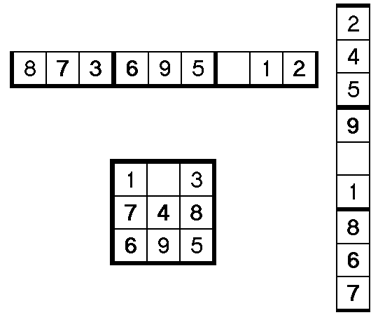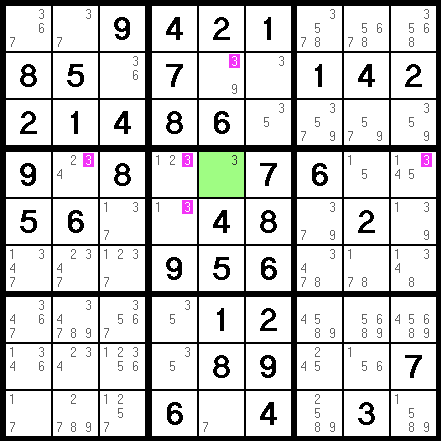Advanced Rules & Techniques | Master Sudoku: From Beginner to Expert - Class 1 PDF Download
Basic Techniques
This is the real "meat" of the game. Some of the techniques are hard to follow at first, and even harder to spot in a puzzle. But with some practice you'll be able to recognize them with a glance.
The first techniques in the list will "do the most damage" - that is, solve the most empty cells.
Open Singles
An open single is the easiest way to fill in a cell in Sudoku.
It simply means there is a row, column, or block that is only missing one number.
Here are some examples:

When only one number is missing, all you have to do is a little counting in your head, and boom! You've solved a cell.
Lone Singles
A Lone Single is when a cell has only one pencil mark left. They are the result of all your hard work — filling in & erasing pencil marks. When you get a cell down to one candidate, you have solved that cell!
The popular computer program Sudoklue calls Lone Singles "Naked Singles".
All you need to do is pull out your eraser, erase that single pencil mark, and fill in the cell with your pen, right?
Well, yes — but there is another important step you must take. In most cases, filling in a cell will eliminate candidates in other pencil marked cells. So be very careful to look at all the other pencil marked cells in your cell's row, column, and block - and erase any corresponding pencil marks.
For example, in the sample below, you can see that the green cell must be a "3". Excellent! Get your pen and fill it in. But also notice the other cells that are affected. Suddenly, this new "3" makes all of the pink pencil impossible as candidates! You'll want to erase them.

You may notice that in erasing these pencil marks, you are creating at least one other lone single.
Excellent! Move to that cell, rinse, and repeat.
Very often, when a puzzle gets down to the last 10 or so unsolved cells, a "chain reaction" of lone singles occurs, and the puzzle can be completed in seconds.
|
9 videos|46 docs
|
FAQs on Advanced Rules & Techniques - Master Sudoku: From Beginner to Expert - Class 1
| 1. What are some basic techniques that beginners should focus on in the Advanced Rules & Techniques Class? |  |
| 2. How can I prepare effectively for the Advanced Rules & Techniques Class? |  |
| 3. Are there prerequisites for enrolling in the Advanced Rules & Techniques Class? |  |
| 4. What is the importance of advanced rules in mastering techniques? |  |
| 5. Can I expect to receive personalized feedback during the Advanced Rules & Techniques Class? |  |
















